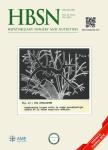A fermented mixed tea made with camellia (Camellia japonica) and third-crop green tea leaves prevents nonalcoholic steatohepatitis in Sprague-Dawley rats fed a high-fat and high-cholesterol diet
作者机构:Department of NutritionFaculty of Nursing and NutritionGraduate School of Human Health ScienceUniversity of NagasakiNagasakiJapan Division of Nutritional ScienceGraduate School of Human Health ScienceUniversity of NagasakiNagasakiJapan Agriculture and Forestry Technical Development CenterNagasaki PrefTea LaboratoryNagasakiJapan Agriculture and Forestry Technical Development CenterNagasaki PrefForest Research SectionNagasakiJapan Department of Pathology and Laboratory MedicineTokushima University Graduate SchoolTokushimaJapan
出 版 物:《Hepatobiliary Surgery and Nutrition》 (肝胆外科与营养(英文))
年 卷 期:2018年第7卷第3期
页 面:175-184页
核心收录:
学科分类:1002[医学-临床医学] 100201[医学-内科学(含:心血管病、血液病、呼吸系病、消化系病、内分泌与代谢病、肾病、风湿病、传染病)] 10[医学]
基 金:a research and development:science and technology research promotion program for agriculture forestry fisheries and food industry
主 题:Camellia leaves green tea leaves fermented tea nonalcoholic steatohepatitis high-fat and high-cholesterol (HFC) diet
摘 要:Background:Established treatments for non-alcoholic steatohepatitis (NASH) are few, thus it is imperative to develop novel dietary strategies that can prevent NASH. A fermented mixed tea (FMT) made with Camellia japonica (Japanese camellia) and third- crop green tea leaves by tea-rolling processing was reported to reduce body weight and adipose tissue weight in Sprague-Dawley (SD) rats. Because visceral fat is one of the most important factors for the development of hepatic steatosis, this FMT supplementation can be a candidate dietary strategy for the prevention of NASH. Methods:Nine-week-old male SD rats were fed a high-fat and high-cholesterol (HFC) diets with or without FMT (camellia and third-crop green tea leaves at ratios of 1:5, 1:2 and 1:1) for 9 weeks (n=6–7/group). Histopathology, serology and expressions of ifbrogenetic, proinlfammatory, oxidative stress and lipid metabolism-related genes in the liver were evaluated. Results:Histologically, HFC diet with FMT at a ratio of 1:5 dramatically reduced NASH progression (14%) compared to the HFC diet without FMT (100%). FMT at a ratio of 1:5 reduced hepatic steatosis due to the activation of microsomal triglyceride transfer protein, and FMT at a ratio of 1:2 reduced mRNA levels of some proinlfammatory, lipid metabolism-related, ifbrogenic and oxidative stress marker genes. Conclusions:Our data suggest that FMT at a ratio of 1:5 or 1:2 likely possesses a preventive effect on NASH progression.



